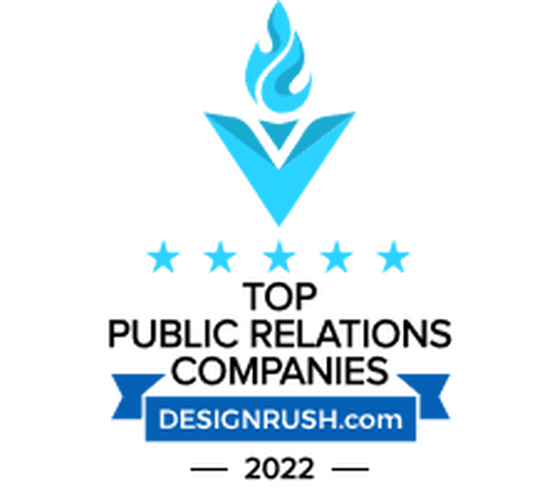 Worried that hackers are trying to access your WordPress website? You have the right to be worried about a hacker and your website. Hackers use error metaphors and techniques to guess signed and corrupted data on WordPress sites. The most attacked page is the login page. In this article, our a boutique travel and lifestyle public relations agency has teamed up with Webster Solutions, to provide invaluable tips to prevent a hacker from accessing your website. Once a hacker comes into your control panel, they can take complete control of your website. They will install malware, backdoor, damage your website, advertise and sell illegal products, steal your personal information, distract your visitors to the site, and engage in other malicious activities. Fortunately, you can protect your signature page by limiting the number of times a user tries to enter the correct information. Why Should You Limit Login Attempts? While WordPress is a stable solution, it does not protect your website from hacks. A powerful hacker is a method that uses examples and errors to crash your WordPress website. The most common type of solid attack is to guess a password. Hackers use software to control your information so that they can access your site. By default, WordPress allows users to enter passwords as many times as possible. Hackers can take advantage of this by using scripts that enter different combinations until they guess the correct login. You can prevent cruel attacks by limiting the number of failed login attempts per user. In WooCommerce, you may integrate Role-Based Prices for WooCommerce, but still, you should restrict their login attempts. For example, you can temporarily block a user after 5 consecutive failed login attempts. What are WordPress Limit Login Attempts? By default, WordPress allows an unlimited number of login attempts to your site. You can try as many username and password combinations as you like. Hackers are aware of this and take advantage of this device. First, they compile a database of frequently used usernames and passwords, along with stolen or purchased data. They then program robots to visit WordPress sites and test thousands of username and password combinations in less than a few minutes. By doing this, hackers can enter many WordPress sites. This is called a brute force attack because they crawl your area with thousands of login requests in minutes. Using this hacking method, hackers have a reasonable success rate (around 10%) because WordPress users typically assign weak login credentials. Although 10% seems small, they can quickly hack into thousands of websites with millions of sites in WordPress. By limiting the number of login attempts, you can stop pirates and their robots. The user will receive a limited number of times to enter the correct login credentials. For example, you can give three tests. If a user fails to enter the right credentials every three times, they will be locked out of their account. They are presented with options for restoring login credentials, such as:
Benefits and Drawbacks of Limiting Login Attempts There are good sides to limiting login attempts in WordPress, but there are also some downsides. Benefits The main benefit of restricting sign-in attempts is that it prevents robots and humans from accessing your WordPress blog or website (we’ve already said that). This is useful even if you have a password that is difficult to guess. It also prevents excessive pressure on your server. If a hacker enters too many passwords into your site in a short time, the strain on your server will increase. Therefore, speed and performance suffer. You don’t want that. It is usually sufficient to lock the hacker to prevent further login attempts temporarily. Drawbacks Genuine users may also be disabled if they have multiple failed login attempts, and it’s pretty awkward. However, you can fix this problem with an allowlist of all known WordPress users so that they never have access. Second, the easiest way to limit sign-in restrictions is to use a plug-in. Although the plug-in itself is easy, many WordPress users are exhausted by using it. You can use an alternative method by modifying your theme in the function.php file to resolve this. More Security Tips Restricting sign-in attempts is just one part of WordPress’s security. There are other security tips to keep hackers away. Here is some more information. Use Strong Passwords Your password is the gateway to your website. If it is weak, anyone (desired and unwanted) can enter without resistance. If this is strong, only legitimate users will be able to access it. So use a strong password as much as possible. Two-Factor Authentication This is a security process in which a WordPress user accesses the website only after two authentication factors have been provided. This is another way to prevent brute force attacks. Once you’ve set it up, you’ll receive your phone code every time you log in. This authentication method works well, especially if connected to a strong password. WordPress Updates The most significant cause of WordPress security breaches is a vulnerability in plug-ins. Keeping the WP kernel, plug-ins, and themes up-to-date is critical. Uninstall plug-ins and themes that you don’t need. Use Only a Recommended WordPress Host WordPress has not left us unconscious. WordPress hosting requirements are clearly stated, and using an unauthorized host could compromise your site from attacks. Not Using SSL Certificate Data sent over the web without SSL will be made public. This means that data can be stolen and used for illegal purposes. An SSL certificate encrypts your data and prevents hackers from accessing your data. Concluding Remarks Brute force attacks are a common vector of hacker attacks, and WordPress sites are often the preferred target. Hackers constantly target WordPress sites. So it is even more vital that you put appropriate security measures on your site. The WordPress login page is the most attacked, so restricting login attempts is a good place to start. All you have to do is prevent hackers and robots from performing many consecutive login attempts. By Vishal Dudhal, partner, Webster Solutions and consultant for Allen Marketing Communications, Inc.
0 Comments
 The internet will be marking its 40th year of existence on January 1, 2023. Since its introduction, the way people live today has drastically changed. Everything is connected to the internet. Even in the way we sell products or services. It is transforming the marketing landscape in ways we never thought possible. In this article, our a boutique travel and lifestyle public relations agency has teamed up with Webster Solutions, examines the relationship between the internet and marketing has become so intertwined that traditional methods are starting to shift towards the digital era. Thus, the term “digital marketing.” As defined by Investopedia, it is “the use of the internet, mobile devices, social media, search engines, display advertising, and other channels to reach consumers.” The Evolving Marketing Landscape While technology has enabled multiple ways to reach a target market, the demand for more strategic marketing has increased. Traditional marketing relied on mass media like television, radio, and print to get messages across to their intended audience. But it only guarantees a certain percentage. In the digital age, reaching the intended market is now more precise. Digital marketers call this “hyper-personalization”. Marketing tools being used today are a stack of apps, all geared towards an individual or a specific target group. With the help of AI, machine learning, and automation, people can receive messages that are tailor-fitted according to their profiles, interests, hobbies, and so on. But two specific digital marketing tools stand out from the rest: emails and push notifications. Both are technology-driven methods to reach a target market. But they differ when it comes to structure, process, and form of delivery. It is important to know their advantages and disadvantages and when to use which tool strategically. Email Direct Marketing While emails have sprouted in the labs of MIT as early as 1971, it wasn’t widely used until the early 90s. Today over 333 billion emails are sent and received every day worldwide according to Statista. And this number is projected to grow to over 376 billion by 2025, a 30 percent increase from this year. Shockingly, an average person or employee receives around 121 business emails per day. When it comes to its structure, email marketing content allows more information to be downloaded to the individual. Ideally, you can attach one or two videos and images with an accompanying text no longer than 200 words. Identifiers like mastheads or logos also help make an email more legit and credible. The process of email marketing can be quite laborious especially when you have a long email list. Some marketers rely on email automation services and mass email platforms like MailChimp to help ease the burden of sending the same message to many email addresses. Using mail merge also helps personalize each message according to the names listed in a database. Emails are mostly read on desktops or laptops. But a growing percentage of people are checking their emails on their mobile phones. This has an impact on the content you put in your email. Large files and long texts are most often “delete-worthy”. Some emails are also sent to the junk folder. The average email click-through rate is 2.13 percent. That means for every 100 emails sent, you’ll get 2-3 people who will click on your content. Push Notifications Push notifications on the other hand are like little sticky notes popping up on phone screens of individuals. They are usually reminders for upcoming events or a product that has gone on sale. An average smartphone user in the US receives 46 app push notifications in a day. Compared to emails, push notifications to have a simpler structure, with words kept at a minimum of 15 to 20. Push notifications may not have the option to embed or attach media so it is important to be strategic about the choice of words. These are also only available mostly smartphones. The process for push notifications can be less complicated and the click-through rate on Android is at 4.6 percent and 3.4 percent on iOS, slightly higher than emails. With basic personalization, CTR can improve by 9 percent. While push notifications allow for a more personal approach to marketing, they must be used sparingly. Constant bombardment will push the subscriber to cancel his or her push notifications and that’s the end of your marketing engagement. Our talented team is here to help. Give us a call. By Vishal Dudhal, partner, Webster Solutions and consultant for Allen Marketing Communications, Inc.  Design Rush, a premiere B2B Marketplace, has recognized Allen Marketing Communications, Inc. as one of the emerging PR agencies in New York City. Our industry experts researched and ranked the top-performing public relations companies in New York that help brands execute meaningful press coverage and build authority.  The terms user experience (UX) and user interface (UI) are frequently used interchangeably, but, are completely different from one another. User experience (UX) refers to the benefits users acquire from using products and utilizing services. Meanwhile user interface (UI) pertains to the features and structures that comprise the products and services users use, access, and enjoy. In this article, our a boutique travel and lifestyle public relations agency has teamed up with Webster Solutions, to share insights about the difference between the UX (user-experience) and UI (user-interface). Processes of UX/UI Designing The step-by-step processes of designing UX and UI overlap, and, thus, are normally combined into a single guide. Below are the steps involved in designing UX/UI: Define Products The nature of businesses and ambiances of workplaces define the requirements of organizations. Designated specialists need to be aware of these requirements, before any work that involves UX/UI designing can be started. Studying the attractiveness and benefits of products is a pre-requisite to studying customers’ desires and preferences. Without having the awareness of what the products and services offer, specialists won’t be able to predict the nature of resulting user experiences. In-depth studies of products are necessary to maximize chances of producing accurate predictions of the creation of user experiences and interfaces. Do Research Doing research is the most important step in the process of designing UX/UI. Experts plan the direction where the business is going. To successfully implement this plan, experts study the ways consumers utilize the systems of purchasing products and services. The first step in studying consumer behaviors is to conduct clear analyses on the market and industry competitions. Conducting these analyses is the key for businesses to have great chances of beating their competitors in the general market. The digital era of the 21st century ushers in widespread use of the internet and other technological tools and resources. With this said, it’s highly observed organizations that make use of the internet and technological materials have increased in the past twenty years or so. Analyzing how the websites of businesses rank in Google search’s SEO results, thus, makes a huge difference in predicting the chances of successful businesses have in beating their competitors. Adopting competitors’ retail and marketing techniques enables businesses to do trials and errors. Organizations get glimpses of the strategies that work, and don’t work by adopting these business techniques. Conduct Thorough Analyses of Other Kinds Specialists gather the data obtained from the research stage. Specialists, thereafter, produce personas that are hypothetically-based, and experience maps. Hypothetical personas refer to the people envisioned as potential customer. Hypothetical personas and experience maps are the sources for useful predictions of various scenarios that’ll surround the usage of products and access of services the businesses offer. Design the User Experience and User Interface Specialists produce the end products of the ideas collected in the above-mentioned process, thus, finally generating the final versions of the UX and UI. The first step in doing the designs for both the user experience and user interface is the creation of the final graphic styles. As the final graphics are integrated, the specialists begin working on the approved styles or designs of the UX/UI. The following are the steps involved in the designing processes themselves of user experience and user interface:
Conduct Final Testing In this final stage, specialists would need to have already come up with answers to these two questions: Do users need the created apps? (User Interface) Are the apps usable? (User Experience). In order to successfully integrate the above-mentioned steps, specialists need to have systematized and organized modes of working. Successfully designing UX/UI is the key to retaining current customers and acquiring potential new long-term customers, as well. By Vishal Dudhal, partner, Webster Solutions and consultant for Allen Marketing Communications, Inc.  During the last three years, we could all agree the world around us has changed quite a bit during the COVID-19 pandemic. In fact, the beverage industry has seen an explosion of organic beverages, mocktails, and functional beverages as a way to stay healthy during the pandemic. Allen Marketing Communications, Inc., a boutique food and beverage public relations agency based in New York City, spotlights key trends in the beverage markets as we enter an endemic phase of the novel coronavirus. Organic Beverages “By 2027, the global organic beverage market is expected to reach $32.78 billion. Brands are crafting organic to help customers address specific wellness” (Source: Distillery Trail) As previously mentioned, people became much more conscious and attentive to their health during the Covid-19 pandemic – there has been an explosion in tastier drinks paired with alcohol, as well as mocktails (also known as non-alcoholic drinks). Due to this we’ve seen a drastic increase in the market of organic drinks. Looking at the store shelves nowadays there are organic drinks left and right, as companies have turned toward manufacturing beverages with less artificial flavoring, lower sugar and no sugar. Kombucha tea is gaining in popularity as a healthy beverage to boost one’s immune system, reduce blood pressure and help with digestion. Kombucha has been around for a long time but just recently we’ve seen it fly off the shelves and, as more consumers discovered the health benefits and some individuals have start brewing their own Kombucha at home. Functional Waters Functional waters are simply water that is ”infused with herbs, vitamins and antioxidants” as a way to provide consumers with health benefits. (Source: PureWow). The Covid-19 pandemic has inspired consumers to become much more health conscious, often seeking natural ways to boost one’s immunity. According to Progressive Grocer, “Older consumers see the added health benefits of functional waters as an opportunity to be more efficient in their pursuit of all-around better health,” he explains. Younger consumers, meanwhile, are open to options beyond supplements.” Research shows that “by 2025, the global functional water market is expected to reach $18.4 billion. Consumers are turning away from sugary drinks and choosing functional waters – still or sparkling, herb infused waters.” (Source: Distillery Trail) Ready to Drink (RTD) Cocktails and Mocktails The COVID-19 pandemic has inspired consumers to get creative and mix things up, often becoming their own personal bartender and mixologists at home. During the last couple of years, consumers have been focusing on their health. Ready to drink (RTD) cocktails and mocktails are becoming much more popular as consumers examine the healthier ingredients in these items. RTD cocktails have become popular because of the convenience of having these drinks available in Many of these RTD cocktails and mocktails, which are now being rolled out in stores, are providing consumers with more vibrant tasting drinks and making them sustainable with natural ingredients with far less additives. Consumers once were asking for seltzers with subtle flavors, giving just the hint of the flavor. That narrative has since been flipped. Bud Light has rolled out their new soda-themed seltzer flavors, such Lemon-Lime, Orange, Cola, and Cherry-Cola. The sports company Barstool Sports has even released their own Owen’s transfusion mix. The tides have changed, yet it is a simple one at that. Ready to Drink (RTD) Coffee Ready-to-drink (RTD) coffee is simply a cold brewed coffee in a bottle or can. Major coffee companies are following the new initiatives – lower sugary coffees, as well as new coffee products to go. “The global Ready to Drink (RTD) Coffee market is projected to reach USD $42.36 billion by 2027, exhibiting a CAGR of 8.31 percent during forecast period,” according to Fortune Business Insights. In fact, the RTD coffee market has expanded to include “snapped chilled coffee and sparkling canned coffee targeting consumers looking for beverages on the go.” (Source: Fortune Business Insights. Our food and beverage public relations professionals are here to help companies generate brand and consumer awareness in the growing beverage industry. Our team is here to help. Give us a call. By Robert Goldsmith at Allen Marketing Communications, Inc.  The U.S. business sector is an ever-growing entity, with over 430,000 new business applications submitted in the first month of 2022 alone. Statistics show that in 2021, out of the 32.5 million small businesses in the nation, 50 percent, or roughly 15 million are at-home enterprises. If you are among this vast number of home-based entrepreneurs or starting your journey to become one, you may find that your dreams exceed your home's current capacity. An upgrade to more spacious accommodations is in order, starting with a few simple tasks. In this article, Allen Marketing Communications, Inc., a boutique travel and lifestyle public relations agency based in New York City, share tips for growing your business venture. Handling the Official Side If you are starting a business rather than simply moving an existing one, register it and get your tax number. Depending on the region you are in, you may need to obtain a license. Also, ensure (before buying your new home) that the local zoning regulations do not prohibit you from setting up a home business. Pick a business structure (laws vary based on area). Purchase insurance for your business. Make sure you have all the appropriate documentation filled out. You will need to update your address information even if you had previously completed the paperwork for an existing enterprise. Starting or moving an at-home business while upscaling to a new home can be stressful and overwhelming, but it doesn't have to be. Staying organized and focused on completing tasks can simplify and ease the process. Designing the Perfect Office Space Dedicate a single room in your new dwelling to being the home office. Doing so helps with work-life balance, among other benefits. If you have not already done so, invest in a comfortable chair and desk setup. If you are likely to be sitting a lot, consider nontraditional options, such as kneeling or standing desks and exercise ball seats, to combat the negative impact of inactivity. Pick a room with natural lighting from a window or skylight, which can enhance productivity, focus, and mental wellbeing. Also, check with your accountant for updated information as it pertains to tax deductions associated with having a home office. Rules are constantly changing and it is important to stay abreast about the current rules as it pertains to legal tax deductions for a home-based deductions. Finding the Perfect Location Whether you are an established business owner whose operations have outgrown your home or a new one who finds your abode too small for a startup, your first step should be to survey your resources. What can you reasonably afford? See if you can get pre-approved for a loan. Once the finances are taken care of, formulate a summary of what you are looking for:
Remember, you are relocating to a place that will double as both home and workplace for probably years or even decades, so plan far in advance with that and all the possibilities, such as starting a family, in mind. Consider if you need a real estate agent and locate one via acquaintances, a referral program, or a website. Make sure to thoroughly vet homes. Attend virtual and in-person viewings and ask your agent and/or the seller questions. Moving With Minimal Fuss and Stress Organization is vital to an easy moving process. Separate everything into categories and apply detailed labels liberally and consistently based on a system. Pack in advance and employ professional movers. Keep important items, such as business documents, in a specific location and not jumbled up with the rest of your possessions. Develop a moving plan and schedule and adhere to it. Market Your Business As grow your business, it is important to market your business. A website is very important marketing tool to inspire first-time and new customers to learn about your business. It is important to weave in SEO keywords throughout your website and to optimize your site to increase your rankings in online searches. Blogs are a low-cost marketing tool to boost your website SEO visibility in online. It is important to post blogs two sometimes three times a week to increase your company’s presence. Hire a PR pro to tell your story and generate credible third-party editorial stories about your brand, product and services. Stories in high circulation media outlets will prove invaluable with through the backlinks to drive traffic back to your website. Our team of talented lifestyle public relations professionals are here to help. Give us a call. Guest Post By Chelsea Lamb at Business Pop Image via Pexels |
Archives
July 2024
Categories |
HoursM-F: 8:30 am - 6 pm
|
Telephone(917) 371-3753
|
|
Quick LInks |
 RSS Feed
RSS Feed